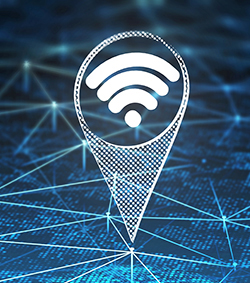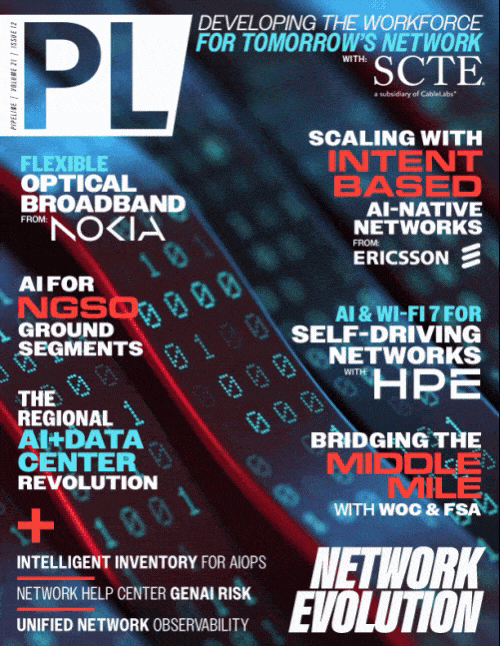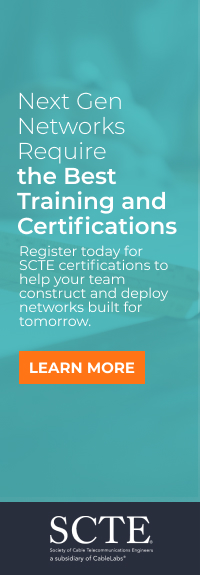The Fast Lane to Self-Driving Networks:
AI Meets Wi-Fi 7 & 6 GHz
By: Sanjoy Dey
 As digital experiences become richer and more immersive, the demands on wireless infrastructure have never been greater. Wi-Fi 7, the latest evolution in wireless technology, is designed to absorb
this pressure with unprecedented performance in speed and responsiveness. But raw capacity alone isn’t enough. To truly unlock Wi-Fi’s potential, the network itself must evolve—not just in terms of
bandwidth, but also in terms of intelligence. The convergence of AI-native operations, cloud-native infrastructure, and smarter data collection, combined with Large Experience Models, is setting
the stage for networks that don’t just connect, but think and act — a self-driving infrastructure built for the future.
As digital experiences become richer and more immersive, the demands on wireless infrastructure have never been greater. Wi-Fi 7, the latest evolution in wireless technology, is designed to absorb
this pressure with unprecedented performance in speed and responsiveness. But raw capacity alone isn’t enough. To truly unlock Wi-Fi’s potential, the network itself must evolve—not just in terms of
bandwidth, but also in terms of intelligence. The convergence of AI-native operations, cloud-native infrastructure, and smarter data collection, combined with Large Experience Models, is setting
the stage for networks that don’t just connect, but think and act — a self-driving infrastructure built for the future.
Self-driving networks bring out the best in Wi-Fi 7
Wi-Fi 7 isn’t just the next leap in wireless speed; it’s a pivotal moment in how enterprises design and operate networks. The explosion of connected devices, interactive applications, and real-time services is forcing IT leaders to shift from reactive maintenance to autonomous, outcome-driven operations. Organizations are being pushed to rethink how networks are built, managed, and optimized. In industries like higher education, healthcare, retail, and large enterprises, Wi-Fi 7 offers higher throughput, lower latency, more reliable coverage at range, and greater reliability, enabling use cases once thought unattainable over wireless.This shift raises a critical question: how can networks keep pace with escalating demands without multiplying complexity? How can we unlock the full potential of Wi-Fi 7? The answer lies in self-driving capabilities — AI-powered networks that can self-configure, self-monitor, and self-heal. As IT leaders prepare for this shift, the priority isn’t just adoption of Wi-Fi 7, but how to get the most out of it. All signs lead to one and only one conclusion – self-driving networks bring out the best in Wi-Fi 7.
Navigating the 6 GHz highway is not as easy as it seems
Moving to 6 GHz is like shifting from a two-lane city street to an eight-lane expressway — there’s more capacity, but it’s much harder to manage. As Wi-Fi 7 expands into the 6 GHz spectrum with wider channels (up to 320 MHz), higher modulation (4K QAM), and multi-link operation, the Radio Frequency (RF) environment becomes significantly more complex and dynamic. Static or rule-based Radio Resource Management (RRM) simply cannot keep pace with the real-time demands of high-density, high-performance networks. This is where AI-native RRM becomes indispensable.For the best user experience, RRM must deploy reinforcement learning to continuously analyze telemetry from dedicated scanning radios built into each access point (AP), dynamically adjusting channel selection, transmit power, channel width, and band steering—not just based on current conditions, but also on historical patterns and predictive modeling. AI-native RRM must apply Dynamic Frequency Selection (DFS) optimizations, avoiding radar-prone channels based on accumulated radar event data, and use auto-cancellation and auto-conversion to disable or repurpose 2.4 GHz radios to reduce interference. These intelligent adjustments are made both locally in real time and globally via cloud-based optimization, ensuring that networks remain balanced, resilient, and high-performing without any manual intervention. In the context of Wi-Fi 7, where throughput and latency are critical for applications like AR/VR and 8K streaming, AI-native RRM is not just a luxury; it’s a necessity for delivering consistent, high-quality user experiences.
AI-native wired backbone is a must
Wireless intelligence is only as strong as the wired foundation beneath it. With Wi-Fi 7 delivering multi-gigabit speeds and demanding higher power budgets, legacy switching infrastructure often becomes the bottleneck. Modern, AI-native switches are purpose-built to meet these challenges, offering an ample Power over Ethernet (PoE) budget at a switch level, enough power per port, and multi-gigabit uplinks to ensure seamless data and power delivery to Wi-Fi 7 APs. However, switching isn’t just about delivering power and bandwidth; it’s also an opportunity to catch issues like authentication failures, segmentation errors, or policy misconfigurations before they affect users.In this model, the switch is no longer a passive conduit; it is an active participant in network assurance. By streaming granular performance data to the cloud, it enables AI-driven Wired Assurance that automates provisioning, flags anomalies, and initiates proactive remediation. This transforms the wired fabric into a collaborative partner — effectively a co-pilot — ensuring that the Wi-Fi 7 infrastructure receives both the bandwidth and power they need, while IT operations scale with simplicity, visibility, and trust from edge to cloud.



















